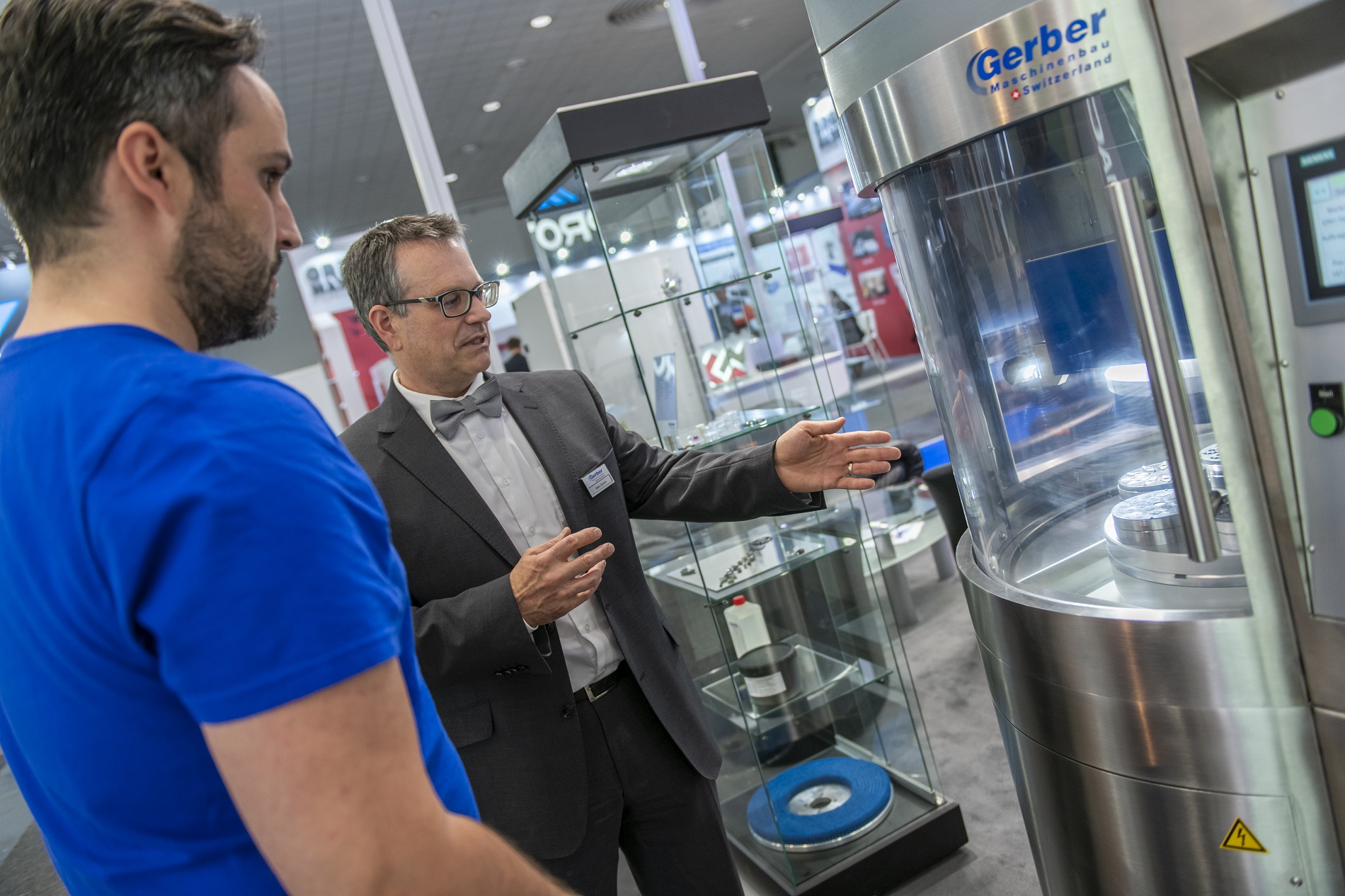The technology brushing, deburring and polishing process
In this process, a brush, which is coated with an abrasive or which consists of bristles with incorporated abrasive granules, is allowed to slide over a sharp-edged cutting tool. The result of this is an edge rounding. With the brush polishing process, radii from a size of 5 μm up to approx. 200 μm can be reproducibly generated. There is no secondary burr when rounding with brushes. Brushes are also used to prepare cutting tools for coating. Such a small edge rounding ensures that the coating has maximum adhesion at his important point and does not flake. The rounding can be reproduced by the setting parameters of the brushing process. Further advantages are consistency as a result of tool life, consistency in the part quality, consistency in the cutting edge preparation, increased stability of the cutting edge as well as reduced tension on the cutting edge.

A regular and reproducible edge honing is only possible with a clearly-defined technology.

The parameters brush speed, brushing duration, plunge depth, bristle type, bristle density and polishing agent influence the size of the rounding, whereas the shape of the rounding is influenced by the parameters plunge depth, angle between brushing direction and edge, brush speed, brushing time and bristle type.
Reproducibility of edge rounding
With the same brush, the same machine settings and the same polishing agent, the same result will always be obtained on the same tools.
Quality improvement through process-reliable deburring
The burr on the cut part, which is produced during cutting, is a disadvantage with respect to dimensional accuracy, assembly and use of punched parts. In practice, common methods for removing burs are:
- Brush deburring
- Electrochemical deburring
- High-pressure water jet deburring
- Machine deburring (deburring milling)
- Vibratory grinding/ barrel finishing
- Thermal deburring
Brush deburring involves sliding a brush, which is coated with an abrasive or consists of bristles with integrated abrasive granules, over the punched part. During deburring, the burr is removed, the edges are rounded and the surface is smoothed without significantly affecting the thickness of the workpiece. This means that the surface is polished and leads to a reduction in roughness, an improvement in the optical surface and has no influence on the dimensions of the punched part. A secondary burr is not formed. Defined and reliable burr removal is essential for this process, as the setting parameters can be adjusted to the component geometry and material. The smallest possible edge radius corresponds to the width of the burr foot.


The punched parts are processed to be free of burrs with the aligned 360° brushes and additionally receive a uniform rounding of the edges and a even polishing.



